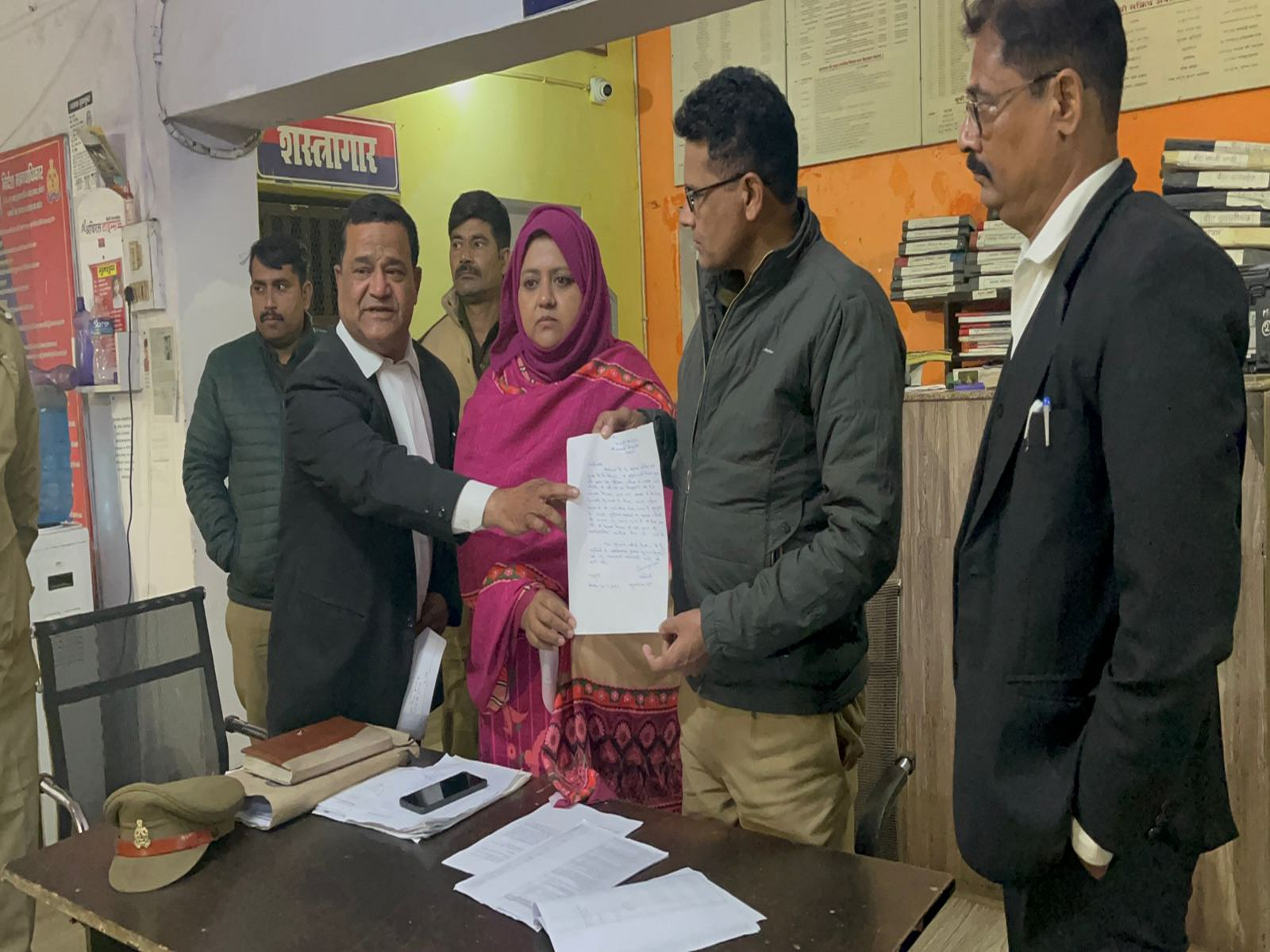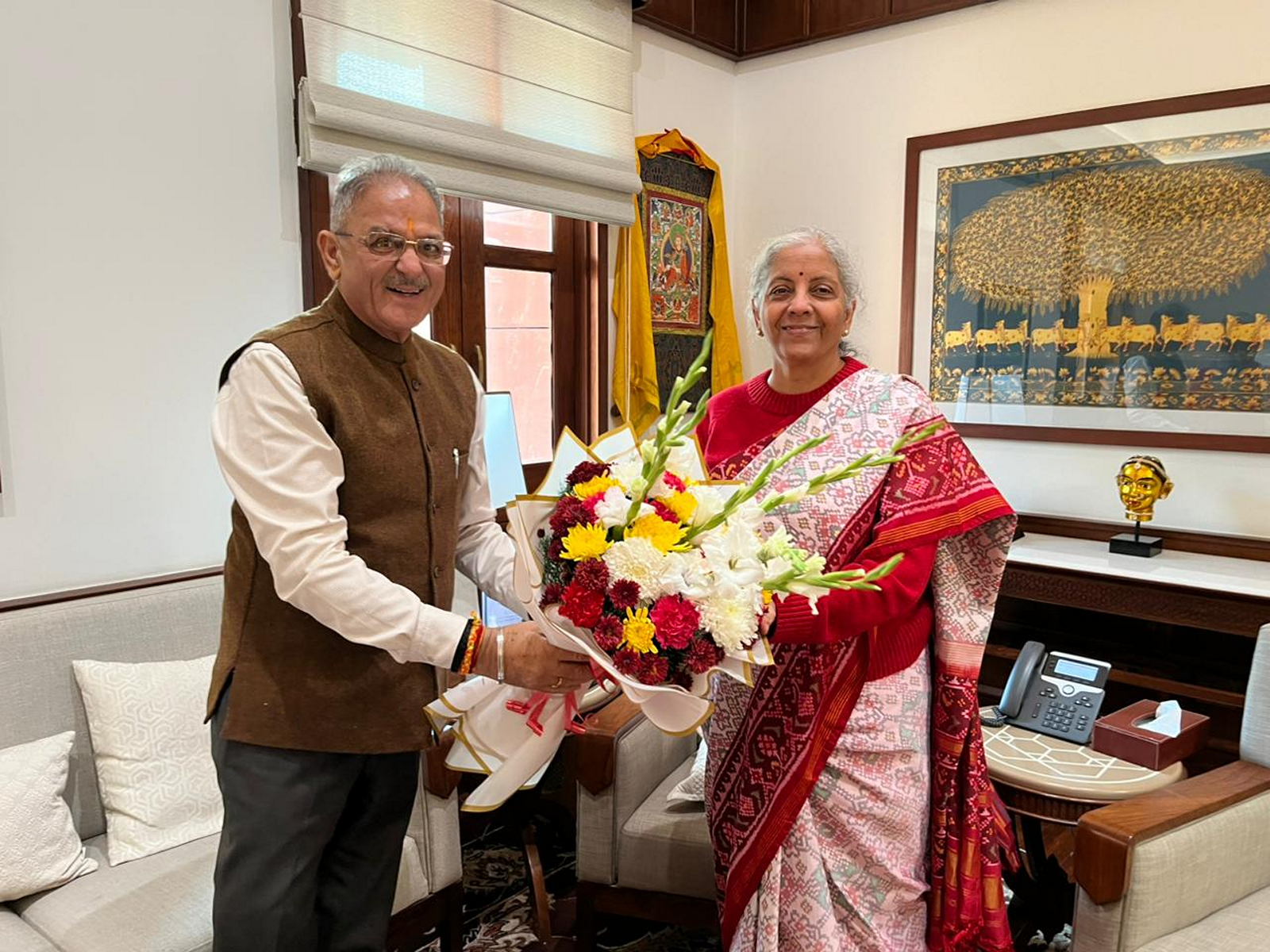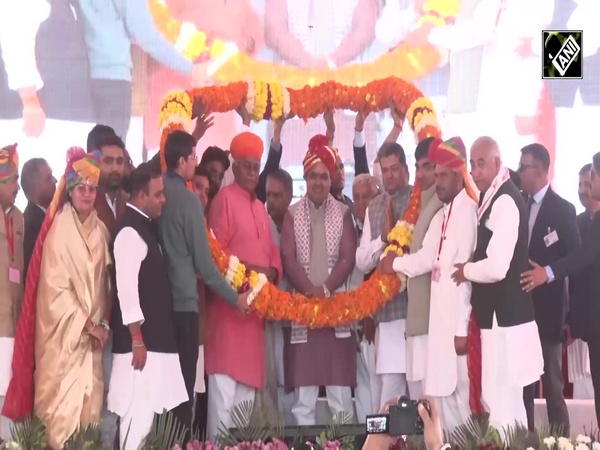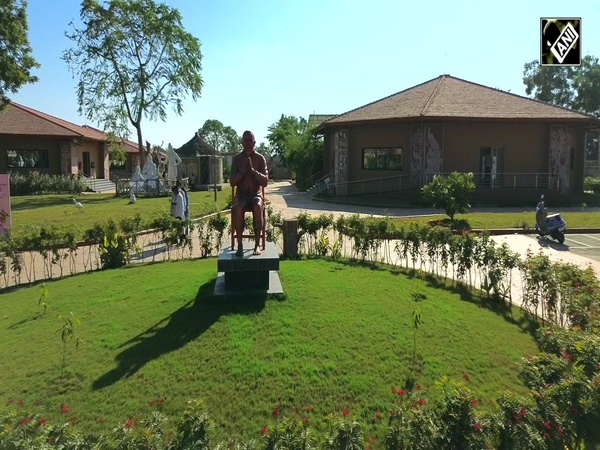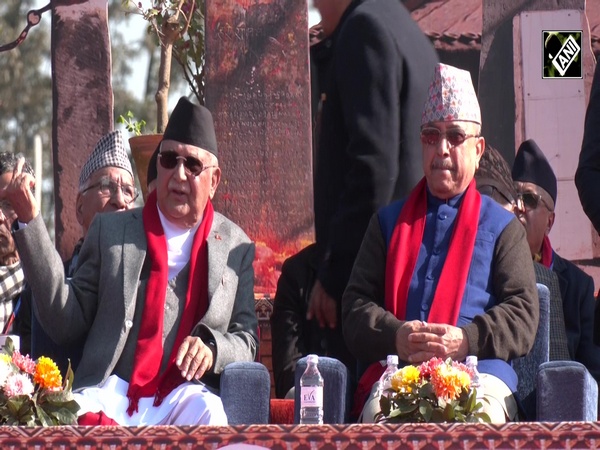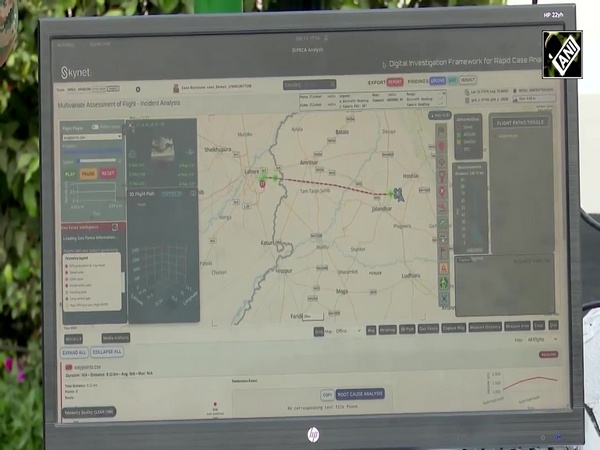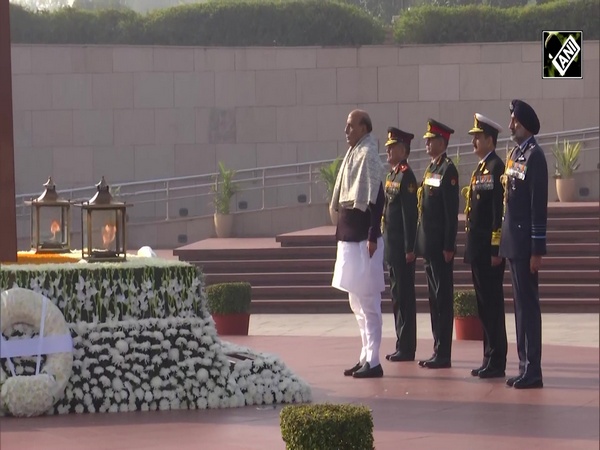Early rains put smiles on face of Nepali farmers despite pandemic woes
Jun 04, 2021

Bhaktapur [Nepal], June 4 : Terraces on slopes of Changunarayan Hill echoed with chattering of farmers in a melody as they plant paddy saplings made favourable by the pre-monsoon climatic effect.
Activation of pre-monsoon climatic effect has put a smile on their face as they got to plant their crops early. While carrying out their annual routine of cultivation, they celebrate the time singing and splashing muddy water on each other in joy.
Amid COVID-19 pandemic, induced lockdown, early rainfall has ensured the availability of water in slopes in the outskirts of Kathmandu, farmers this year are enthralled and excited than in earlier years.
"We plant paddies for our consumption as well as to trade it in the market. While planting it, we come in group and work here. Our work of planting the saplings gets over in between June and July, we are getting over with the plantation this year quite early because of the early rainfall," Raju Bahadur Gautam, one of the farmers from Sankhu told ANI.
Plantation of paddy saplings in the field is known as "Ropain". It is primarily dominant during monsoon season that starts from June.
Ropain Geet (songs) are dominantly heard during the month of June which might last till July which is the high time for farmers to do their cultivation.
Along with the melodies, farmers run behind each other smearing mud on face, splashing muddy water as a means of fun which also indicate the start of cultivation season with the start of the monsoon.
In Nepal, the paddy is cultivated from the height of 60 m above the sea level in Terai to 3000 meters of the hills of Jumla's Chhumchaur.
Nepal annually produces about 5.5 million metric tons of paddy while the consumption stands at 7 million metric tons. Last year Nepal produced a total of 5.55 million metric tons from 1.45 million hectares of land.
Meteorologists of Nepal and other South Asian nations earlier have forecasted that monsoon for the year 2021 will arrive earlier than last year and that Nepal and some other Asian countries are expected to receive normal to above-normal rainfall.
As per Nepal's Meteorological Forecasting Division (MFD), monsoon has already set off in Nepal from 1st of June which will continue for about three months.
Last year, monsoon entered Nepal on June 12, two days later than normal onset date (June 10). In 2019, monsoon entered from eastern Nepal on June 20, delayed by 10 days. Lasting for 105 days in Nepal, monsoon normally leaves the country on September 23.
Almost 80 per cent of the annual rain in Nepal is received during the monsoon (June-September). The average annual rainfall is 1,600 mm, but it varies by eco-climatic zones (3,345 mm in Pokhara and below 300 mm in Mustang).
MFD has estimated the high mountainous region of Nepal to receive 55 to 65 per cent rainfall (snow mainly) this year. Additionally, average rainfall is estimated to be anywhere between 35 to 45 per cent in Lumbini, Gandaki, Bagmati and in western part of Province 2, while Terai region of Province 1 and eastern region of Province 2 are likely to receive less-than-average rainfall.








